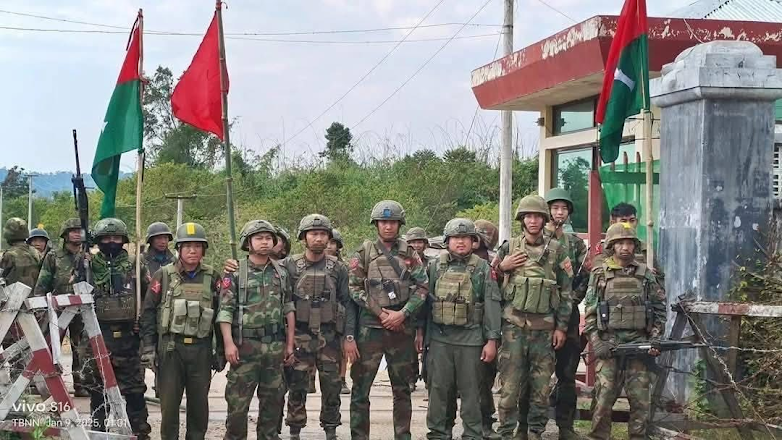Myanmar Spring Chronicle – August 21 Highlights
(Moemaka, August 22, 2025)
Are the Revolutionary Armed Forces United in Purpose and Interest?
As revolutionary armed groups continue to fight against the military junta, the question has emerged—especially after the second phase of Operation 1027—whether these groups truly share a common goal and aligned interests.
Even before Operation 1027 began, questions existed around the federal future of Myanmar—whether it should be a confederation or a federation, whether states should have the right to self-determination, and what kind of federal democratic system should be adopted. No clear policy consensus or formal agreement has been reached among the various revolutionary groups on these critical political issues.
Some leaders argue that it is premature to discuss such matters in detail, believing that the immediate priority is the downfall of military dictatorship. Therefore, they have mobilized armed groups and the public around the shared goal of toppling the junta. The term “revolution” is often used as a catch-all label for these groups, without necessarily distinguishing whether they oppose the junta ideologically or merely militarily.
In reality, some groups appear to fight the junta not from ideological opposition to authoritarianism, but because of conflicting territorial or resource interests—such as control over land, natural resources, or tax collection. Some armed groups operate in a quasi-feudal, hereditary fashion and govern their territories without democratic accountability or elections, often placing military commanders in political leadership by default.
While some excuse the lack of elections due to the groups’ relatively recent formation, this practice may lead to governance challenges or friction in a future federal union. The idea that ideological or political differences can be resolved after the fall of the junta is an optimistic assumption—but current events suggest this may not hold entirely true.
Although it is not necessary to have total agreement on the federal structure at this stage, revolutionary groups should at least discuss how far their end goals align in terms of building a future Union of Myanmar. Without this, cracks are already beginning to show.
Some groups see the path to their goals as still distant, while others believe they have reached their destination once they secure control over certain territories or win key military victories.
Most revolutionary groups broadly agree on the concept of a federal system. But as the second phase of Operation 1027 progresses, practical issues such as territorial administration, natural resource extraction, tax collection, and conscription have triggered clashes and competition between groups.
These incidents show that the idea that “we can resolve our differences after the junta falls” may not be entirely realistic. New problems—such as declaring exclusive control over liberated territories or disputes with neighboring groups—are emerging that were not previously encountered.
Such clashes over territory, power, and dominance foreshadow potential future conflicts even after the junta’s collapse. This presents an opportunity the military could exploit—offering incentives to certain groups or forming new alliances to weaken resistance unity.
To avoid these dangerous scenarios and missteps, it is essential for revolutionary groups to engage in timely dialogue, resolve tensions, and forge real consensus on shared goals and strategies. Only by aligning in purpose and action can the resistance move closer to ultimate victory.

